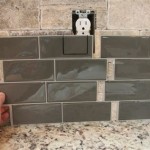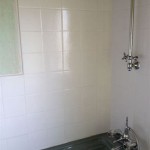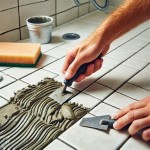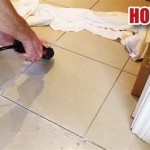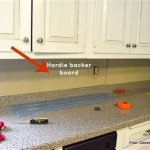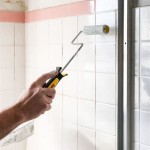Installing Ceiling Tiles Around Fire Sprinklers
Installing ceiling tiles, particularly those around fire sprinklers, requires careful planning and precise execution. Proper installation not only ensures an aesthetically pleasing finish but, more importantly, maintains the functional integrity of the fire suppression system. This article provides a detailed guide to installing ceiling tiles around fire sprinklers, emphasizing safety, compliance, and best practices.
Before commencing any work, it is crucial to understand the local building codes and fire safety regulations. These regulations often stipulate specific clearances and requirements for ceiling tiles around fire sprinklers. Consulting with a licensed fire protection contractor or local building inspector is highly recommended to ensure compliance and to avoid potential fines or safety hazards.
The primary concern is ensuring that the ceiling tiles do not obstruct the operation of the fire sprinkler heads. Obstruction can delay or prevent the sprinkler from activating during a fire, significantly compromising its effectiveness. Therefore, the installation process must adhere strictly to the manufacturer's specifications and relevant safety standards.
Materials and Tools Required
A successful ceiling tile installation around fire sprinklers hinges on having the right tools and materials. The following list outlines the essential items needed for the job:
1. Ceiling Tiles: Choose ceiling tiles that are compatible with the existing grid system and meet the desired aesthetic requirements. Consider fire-rated tiles if required by local building codes.
2. Measuring Tape: An accurate measuring tape is essential for precise layout and cutting of the tiles.
3. Utility Knife or Tile Cutter: A sharp utility knife or a specialized tile cutter is needed for clean and accurate cuts. A tile cutter is particularly useful for thicker or harder tiles.
4. T-Square or Straight Edge: A T-square or straight edge ensures that all cuts are straight and perpendicular.
5. Compass or Circle Cutter: A compass or circle cutter is used to create the circular openings around the fire sprinkler heads.
6. Safety Glasses: Safety glasses are crucial to protect the eyes from debris during cutting and handling of the tiles.
7. Dust Mask: A dust mask prevents inhalation of dust particles generated during the cutting process.
8. Gloves: Gloves provide protection for the hands during handling of the tiles and tools.
9. Pencil or Marker: A pencil or marker is used to mark the cutting lines on the tiles.
10. Appropriate Ladder or Scaffolding: A stable ladder or scaffolding is necessary to safely reach the ceiling grid.
11. Fire-Rated Sealant (Optional): In some cases, a fire-rated sealant may be required to seal the gap between the tile and the sprinkler escutcheon.
12. Escutcheon Rings (if needed): If the existing escutcheon rings are damaged or missing, new ones may be required to conceal the gap around the sprinkler head.
Preparation and Marking
Proper preparation is key to preventing errors and ensuring a smooth installation process. Before cutting any tiles, the following steps should be taken:
1. Measure the Distance: Accurately measure the distance from the ceiling grid to the center of the fire sprinkler head. This measurement will be used to locate the center point on the ceiling tile.
2. Transfer the Measurements: Transfer the measurements to the back of the ceiling tile. Use a pencil or marker to mark the location of the center point.
3. Determine the Hole Diameter: The diameter of the hole required in the ceiling tile depends on the size of the fire sprinkler head and the escutcheon ring. Ensure that the hole is large enough to allow the sprinkler head to operate freely without obstruction.
4. Mark the Circle: Using a compass or circle cutter, draw a circle around the center point with the determined diameter. This circle will be the cutting guide for the opening around the sprinkler head.
5. Plan the Tile Layout: Before cutting any tiles, carefully plan the layout to minimize waste and ensure a balanced appearance. Consider the placement of full and partial tiles to create a visually appealing pattern.
6. Safety First: Prioritize safety by wearing safety glasses, a dust mask, and gloves throughout the preparation and cutting process.
Cutting and Installation
The cutting and installation process requires precision and care to avoid damaging the tiles and ensuring a proper fit around the fire sprinkler heads.
1. Cutting the Circular Opening: Carefully cut along the marked circle using a utility knife or circle cutter. For thicker tiles, multiple passes may be required to achieve a clean cut. Ensure that the cut is smooth and free of any rough edges.
2. Cutting the Tile to Size: Measure and cut the ceiling tile to the required dimensions. Use a T-square or straight edge to ensure that the cuts are straight and perpendicular. A tile cutter can be used for more precise and efficient cuts, especially for harder tiles.
3. Installing the Tile: Carefully lift the cut tile and position it below the ceiling grid. Gently tilt the tile and maneuver it into place, ensuring that the fire sprinkler head passes through the circular opening.
4. Centering the Tile: Ensure that the tile is centered around the fire sprinkler head. Adjust the position of the tile as needed to achieve a balanced and aesthetically pleasing appearance.
5. Checking for Obstruction: After the tile is installed, carefully check for any obstructions that could impede the operation of the fire sprinkler head. Ensure that the sprinkler head can move freely and that the escutcheon ring is properly positioned.
6. Securing the Tile: Ensure that the tile is securely seated in the ceiling grid. If necessary, use clips or other fasteners to hold the tile in place.
7. Sealing (Optional): If required by local building codes or manufacturer's specifications, apply a fire-rated sealant to the gap between the tile and the sprinkler escutcheon. This sealant helps to prevent the spread of fire and smoke.
Addressing Specific Scenarios
Certain situations may require additional considerations when installing ceiling tiles around fire sprinklers.
1. Flush-Mounted Sprinkler Heads: Flush-mounted sprinkler heads are designed to blend seamlessly with the ceiling. When installing tiles around flush-mounted sprinklers, it is crucial to ensure that the tile surface is flush with the sprinkler head. This may require precise cutting and shimming of the tile.
2. Recessed Sprinkler Heads: Recessed sprinkler heads are partially concealed within the ceiling. When installing tiles around recessed sprinklers, ensure that the escutcheon ring is properly positioned and that the tile does not obstruct the sprinkler head's spray pattern.
3. Angled Sprinkler Heads: Angled sprinkler heads are designed to provide coverage in specific directions. When installing tiles around angled sprinklers, ensure that the tile does not interfere with the sprinkler's spray pattern. The opening in the tile may need to be adjusted to accommodate the angle of the sprinkler head.
4. Damaged Escutcheon Rings: If the escutcheon rings are damaged or missing, they should be replaced before installing the ceiling tiles. Damaged escutcheon rings can compromise the integrity of the fire protection system and may not provide adequate coverage of the gap around the sprinkler head.
5. Tiles with Complex Patterns: When installing tiles with complex patterns, careful planning and layout are essential to ensure that the pattern aligns properly around the fire sprinkler heads. This may require additional cutting and adjustments to the tiles.
6. Asbestos Concerns: In older buildings, ceiling tiles may contain asbestos. If asbestos is suspected, it is crucial to have the tiles tested by a qualified professional before commencing any work. Asbestos-containing materials should be handled and disposed of according to local regulations.
Compliance and Inspection
Ensuring compliance with local building codes and fire safety regulations is paramount. A final inspection by a qualified professional is recommended to verify that the installation meets all requirements.
1. Verify Clearances: Ensure that the ceiling tiles do not obstruct the operation of the fire sprinkler heads. Check that the sprinkler heads can move freely and that the escutcheon rings are properly positioned.
2. Review Local Codes: Review the local building codes and fire safety regulations to ensure that the installation meets all requirements. Pay particular attention to any specific requirements for ceiling tiles around fire sprinklers.
3. Document the Installation: Keep a record of the installation process, including measurements, materials used, and any modifications made. This documentation can be helpful for future maintenance and inspections.
4. Schedule an Inspection: Schedule an inspection with a licensed fire protection contractor or local building inspector to verify that the installation meets all requirements. Address any deficiencies identified during the inspection promptly.
By adhering to these guidelines and taking necessary precautions, it is possible to install ceiling tiles around fire sprinklers safely and effectively, ensuring both aesthetic appeal and the continued functionality of the fire suppression system.
Regular maintenance and inspections are essential to ensure the long-term performance of the fire sprinkler system and the integrity of the ceiling tile installation. Any signs of damage, such as cracks, sagging, or water stains, should be addressed promptly to prevent further deterioration and potential safety hazards.

How To Install Ceiling Tile With Sprinkler Head In The Middle Skill Stacking

How To Remove And Replace A Ceiling Tile With Fire Sprinkler

How To Install Ceiling Tile With Sprinkler Head In The Middle Breakdown Skill Stacking

How To Install Ceiling Tile With Sprinkler Head In The Middle Breakdown Skill Stacking

Drop Out Ceiling Panels Ceilume

Drop Out Ceilings Walls

Suspended Ceilings The Risks Of Improper Sprinkler Head Alignment International Fire Protection

Why Fire Sprinklers Belong Above Suspended Drop Out Ceilings Page 2 Of 4 Construction Specifier

What Are Fire Sprinkler Cover Plates Fox Valley Safety

Construction Concerns Sprinkler Head Flex Drops
Related Posts

